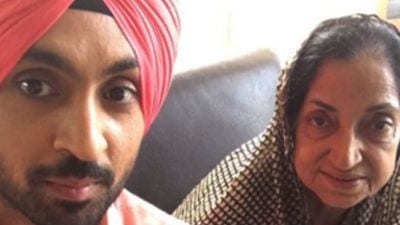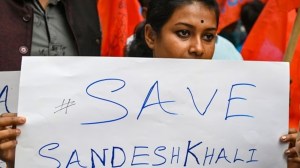- India
- International
Ahead of 2024 polls, not ‘Arogya Mandirs’ but a healthcare manifesto
Technical solutions exist. Implementing these requires strong political will in favour of public health
 The Jan Swasthya Abhiyan has recently released an 18-point “People’s Health Manifesto” . (Representational image)
The Jan Swasthya Abhiyan has recently released an 18-point “People’s Health Manifesto” . (Representational image)We are nearing the first general elections after the Covid-19 pandemic when people from across the social spectrum faced widespread traumatic experiences with healthcare. Yet, the state of healthcare in India has not improved significantly. Hence, it is timely to raise the profile of health as a priority during the coming elections. The Jan Swasthya Abhiyan has recently released an 18-point “People’s Health Manifesto” addressed to all political parties, outlining a comprehensive agenda for changes in the healthcare system. There are seven recommended interrelated shifts in health policies and systems.
A focus on primary healthcare
The first shift entails emphasising public health system-based solutions which rely on expanding and improving public health facilities, especially at the primary level. Widely utilised Mohalla Clinics in Delhi and Punjab and upgraded Family Health Centres in Kerala are successful examples of such approaches which could be upscaled. The rebuilding of primary healthcare is, arguably, far more important than renaming health and wellness centres as “Arogya Mandirs”. Another effective public solution is the Tamil Nadu Medical Services Corporation model (later emulated by Kerala and Rajasthan) which has ensured the availability of essential medicines in public health facilities.
The second shift requires a substantial increase in public health financing to support these improvements. This requires both central and state governments to act. However, given the current fiscal architecture, the Union government needs to take the lead by increasing its public health spending from the current meagre 0.3 per cent of the GDP to at least 1 per cent, along with providing additional health sector financial envelopes to states. This would enable most states to double their spending from the current low average of Rs 2,340 per capita, to say, the level Himachal Pradesh is currently at (Rs 4,170 per capita). The People’s Health Manifesto projects that such expansion of public health financing would be accompanied by better access to free healthcare for large sections of the population. This should lead to a major decline in out-of-pocket spending (which should be reduced to less than 25 per cent of total health spending), thus saving crores of families from debt and ruin.
Decentralising care
The third shift involves systematic social accountability, devolution of powers, and decentralised management of frontline public health services. This is essential to ensure that the increased flow of resources is accompanied by improved public delivery at the ground level. Panchayat oversight and effective decentralisation of basic health services in Kerala is a well-known example. The “Community-based monitoring and planning” initiative implemented during earlier phases of the National Health Mission in several states, notably in Maharashtra, demonstrated that such accountability and participatory planning can make healthcare more responsive and effective in diverse contexts.
Pay healthcare workers
The fourth shift relates to improving the status of healthcare workers. On the one hand, public health services are weakened due to large-scale vacancies, and on the other, large numbers of contractual health workers suffer due to insecure jobs and inadequate compensation. The current policy of contractualisation should be replaced by systematic regularisation of employees and fair, regular terms of employment for ASHAs and Anganwadi workers. All health workers including nurses, doctors and paramedics must be paid decent wages and provided a supportive work environment.

Cutting private sector to size
The fifth shift relates to ensuring regulation of the private healthcare sector in the interest of patients’ rights. Widespread overcharging by private hospitals during Covid-19 gave the private healthcare industry a major boost but meant misery for ordinary people. Profiteering by commercial healthcare at the cost of people must stop. This requires basic measures such as the standardisation of hospital rates in compliance with the Clinical Establishments (Central Government) Rules, 2012 — an issue which has recently been taken up by the Supreme Court. This needs to be accompanied by legally mandated transparency in rates and implementation of the Patient’s Rights & Responsibilities Charter circulated by the Union Health Ministry, required to be displayed and observed by all healthcare providers. This should be accompanied by properly staffed regulatory authorities who can provide timely grievance redressal to patients. Here, the experiences of the West Bengal Clinical Establishments Regulatory Commission can provide useful lessons.
Access to quality medicines for all
The sixth policy change necessitates the availability of affordable and quality essential medicines. Medicines form the largest component (nearly half) of an average household’s spending on health. This change would require expanding price control to cover all essential medicines (extending regulation beyond just 18 per cent of medicines currently covered), along with a return to cost-based pricing and capping the margins in the trade of medicines. It is essential to eliminate all irrational medicines and Fixed Dose Combinations which drain the pocket while being unjustified for the patient’s health. It is also important to implement a comprehensive generic medicine policy, which would cover the labelling and prescription of all medicines. These measures, if effectively implemented, could easily bring down the prices of most medicines to around half, while allowing reasonable profits for the pharmaceutical industry.
A universal healthcare system for India
The final and, perhaps, most important shift envisages moving beyond a scheme-centred, “beneficiary”-oriented approach, focussed on limited services for selected sections through programmes like Pradhan Mantri Jan Arogya Yojana (PMJAY). Evidence during and after Covid shows that this approach is insufficient in bringing down family health spending and does not ensure access to the range of essential healthcare. As India claims to move towards being a $5 trillion economy, it is not unrealistic to expect that our next government should commit itself to implementing a universal healthcare system, which would ensure free, quality care for all with a rights-based approach. The Rajasthan Right to Health Act provides a preliminary example. Thailand also serves as a great example of universal healthcare that can be effectively developed in a country with similar levels of socio-economic development as ours.
All of these shifts are feasible for India in 2024. Technical solutions exist. Implementing these requires strong political will in favour of public health. That is why Jan Swasthya Abhiyan’s comprehensive health manifesto deserves to be widely read, and its recommendations seriously considered for endorsement by all political parties. As citizens, we should demand that in the coming election, we will cast our vote in favour of our right to quality and affordable healthcare. This is a long overdue imperative which has been further underscored by the Covid experience; it is time to place health at the centre of India’s social and political agenda.
The writer is national co-convenor of Jan Swashthya Abhiyaan — People’s Health Movement
EXPRESS OPINION
More Explained
Apr 04: Latest News
- 01
- 02
- 03
- 04
- 05
































